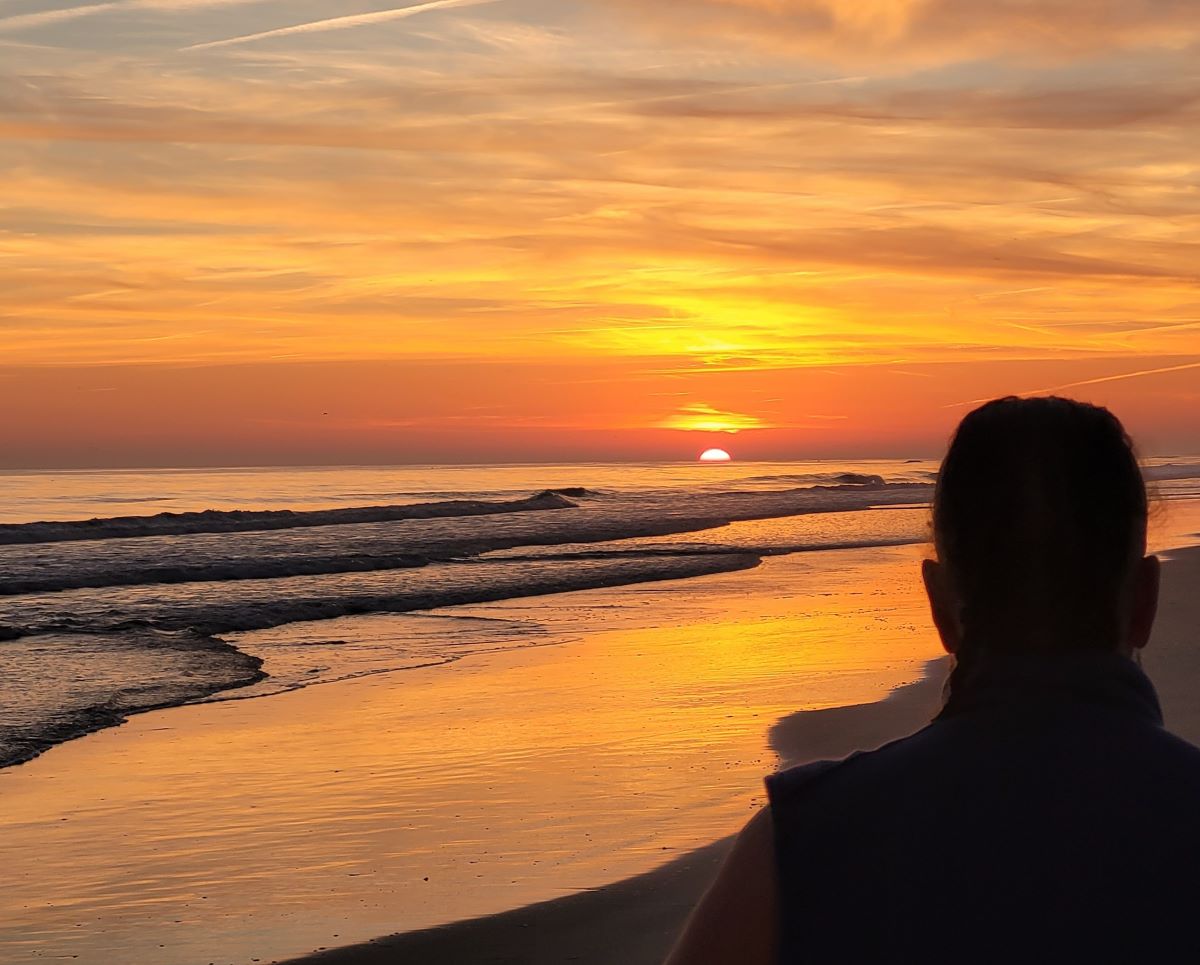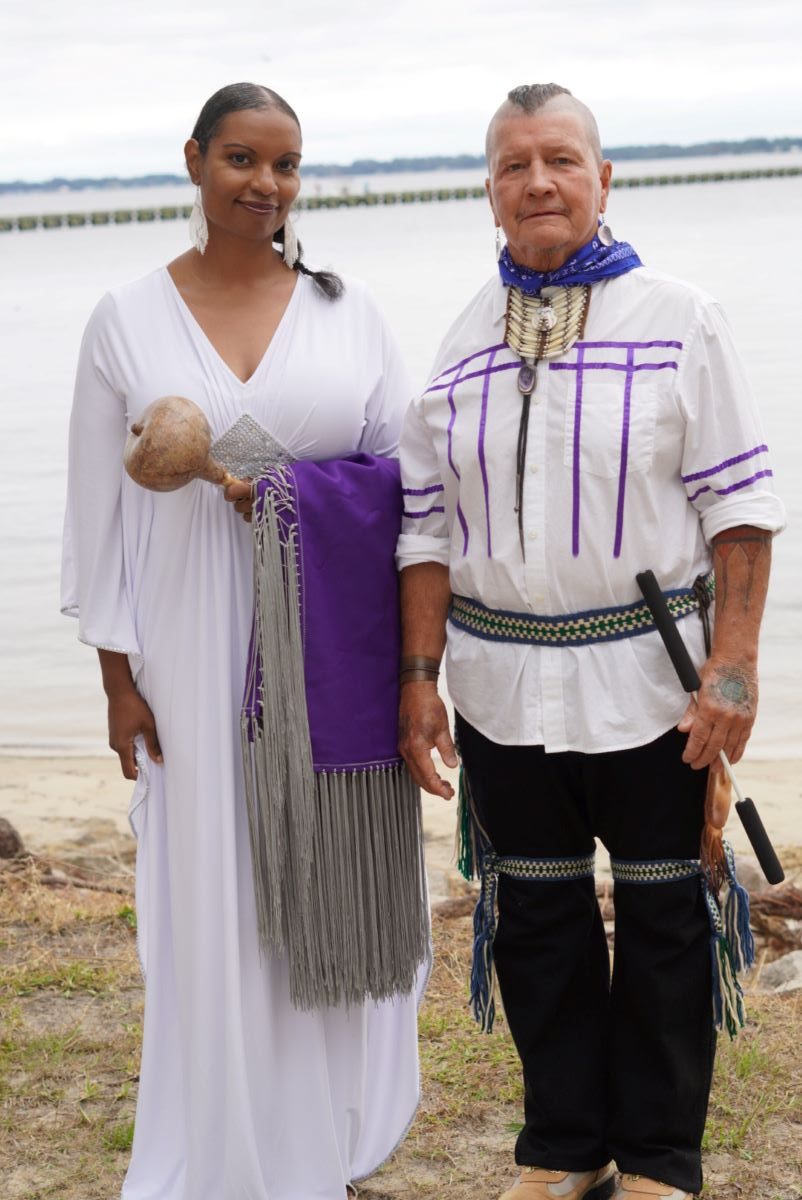
A nonprofit organization founded late last year honors the Secotan leader, Chief Wingina, who was beheaded by the English in June 1586.
Wingina was chief of the tribes that inhabited modern-day Roanoke Island and the mainland across the Albemarle and Croatan sounds. Wingina was first documented by the English during their initial contact in 1584, according to the “Secotan Alliance … and Beyond” website.
Supporter Spotlight
A respected regional leader in the Algonquian tribe, early on, Wingina and the tribe helped the English, but soon they realized that the colonists intended to take over the land. Wingina then began using the name Pemisapan out of regret over having invited the English to settle here.
He started working with other tribal leaders to drive the colony away from Roanoke, but the English had learned from an Algonquian hostage of Wingina’s plan to unite the tribes. As a result, he was murdered, one of the earliest documented in North America, according to state documents.
Gray Parsons of Frisco, a descendant of the Machapunga-Mattamuskeet people of the North Carolina inner banks, had the idea to form the nonprofit, “The Secotan Alliance … and beyond” after spending several years “wondering how to create a way to show proper historical respect to Chief Wingina and his Secotan Alliance people, who had been historically marginalized. And also, I wanted to share his traditional indigenous values in a modern-day world that, in my opinion, was sorely in need of it.”
Parsons, who grew up in Washington, graduated from East Carolina University in 1972 with a degree in parks, outdoor recreation and conservation. He spent his career in various fields, including human services, medical sales and marketing, and the organic and natural foods industry.
Now retired, Parsons, in addition to heading up the Secotan Alliance organization, is on the Friends of the Outer Banks History Center board of directors, a volunteer at the Frisco Native American Museum and Natural History Center, and is vice president of the Pitt-GAP chapter of Epsilon Chi Nu Inc., the first Native American fraternity in the U.S. He is the author of the book, “Hope on Hatterask,” published in 2013.
Supporter Spotlight
Parsons explained that he launched the nonprofit with the help of Joyce Bornfriend, director of the Frisco Native American Museum, which was approved for IRS 501(c)(3) status in late September 2023.
“Although I had founded and managed my own business for many years before retirement, I had never created nor managed a nonprofit. It’s not an exaggeration to say that without her help and support (the alliance) would likely still be a fantasy rather than a reality,” Parsons said.
Parsons said the focus of the organization is “the indigenous Earth ethic of balance and sustainability, both of which are reflected in the alliance’s dual mission statement.”
After getting the nonprofit started, Parsons has been directing his attention over the last several months to coordinating “In the Spirit of Wingina … and beyond,” the alliance’s inaugural event scheduled for May 30-31.
The symposium is two full days of discussion with professors, environmental groups and authors and is to take place at The College of the Albemarle’s Dare Campus in Manteo. There is no charge to attend but Parsons asks that those who want to attend reserve a seat ahead of time.
“We hope this program accomplishes the initial stages of our missions with a myriad of leaders and grassroots workers from the Outer Banks and Inner Banks … and beyond,” Parsons said, “And that they will be motivated to share what they learn over the packed schedule of this two-day event.”
A kick-off event is set for 4-6 p.m. May 29 at the Frisco Native American Museum with two of the speakers. Seating is limited.
Discussion on the first day of the session will focus on “the consequential (yet often marginalized) life of Chief Wingina/Pemisapan and his Secotan Alliance during early contact with English expeditioners, the English military and the effects of his death on the failed colonization attempt … and beyond,” according to the event webpage.
The second day is to transition from history to Wingina’s and the alliance’s longstanding Earth ethic and a traditional Indigenous approach to modern-day environmentalism. Several area and regional environmental organizations and indigenous people are expected to be on hand.

The symposium has been designed, Parsons explained, to “offer a unique indigenous and ‘indigen-us’ approach to reaching the everyday citizen in terms of modifying our collective behavior in protecting our Mother Earth. We hope to learn and teach each other in that regard.”
Parsons said the symposium was made possible through grants from the Outer Banks Community Foundation, Dare Arts and a handful of people who are dedicated to making it happen.
Outer Banks History Center Executive Director Tammy Woodward will be joining Parsons as a moderator for the event.
Woodward explained that when Parsons started the nonprofit, he approached the center for feedback.
“When he decided to do this event, he was looking for volunteers to help with some of the duties,” she said, including announcing the speakers, and she volunteered to help. Also, by being director of the history center, she can help answer questions about what records are available locally.
“I think, us being a part of it also lends credibility because Gray’s nonprofit is fairly new. We believe in his mission and we support his highlighting this era of history,” she said. “I’m really excited about this symposium,” adding she’s looking forward to hearing the different perspectives.
The keynote speaker for the two-day discussion is Dr. Michael Leroy Oberg, distinguished professor of history at State University of New York Geneseo, and author of “The Head in Edward Nugent’s Hand, Roanoke’s Forgotten Indians” published in 2010.
“Dr. Oberg’s book tells the story of Chief Wingina instead of subjugating him to a secondary and relatively inconsequential character in the often-told story of ‘The Lost Colony,’” Parsons said, explaining that Oberg did not ignore the events during that chaotic period regarding the role of the English colonists.
“He simply told the story accurately with balance, including the perspective of both the indigenous population as well as the early civilian and military English expeditioners and colonists. And it was done within the constraints of the academic world as per appropriate citation and peer reviewed scrutiny,” Parsons continued, explaining that this is the only academically accepted work he’s aware of that gave equal time to both the English and Indigenous perspectives in that period.
“From that moment forward, Dr. Oberg became somewhat of a hero to me personally and thus the obvious choice as our keynote and primary speaker at our first event,” Parsons said.
Parsons said that Dr. Charles Ewen, Harriot College distinguished professor of Anthropology at East Carolina University, also is expected to speak May 30.
Ewen will discuss methods and techniques of how archaeological artifacts are gathered, identified and pieced together in the coastal environment to help better understand parts of the various aspects of culture.
Dr. Arwin Smallwood, Dean of Arts, Social Sciences and Humanities at North Carolina Central University, and descendant of the Tuscarora people of North Carolina, will speak on the relationship between the state’s Tuscarora and the Algonquin people of The Secotan Alliance before, during and after English contact.
Dr. Gabrielle Tayac is associate professor in the Department of History and Art History at George Mason University, as well as its faculty adviser for the Native American Student Association. She is a member of the Piscataway Nation, consulting curator for the Smithsonian American Art Museum, and a contributing author on “Native Prospects: Indigeneity and landscapes. Speaking Sovereignty: Powhatan’s Mantle.”
Parsons said Tayac will present “The Indigenous Atlantic: Ancestors Rising,” focusing on land and water ethics, drawing from both her formal and indigenous traditional education models to discuss examples and how they are still relevant today.
The panel planned for the afternoon of the first day is to include representatives from the indigenous tribes, museums and general indigenous diaspora in eastern North Carolina, including the Roanoke Hatterask Tribe, the Machapunga/Mattamuskeet Tribe, the Chowanoke Tribe, Frisco Native American Museum, The Piscataway Nation and other indigenous individuals, Parsons said.
Muddy Sneakers Outdoor Classroom Executive Director David Webb, award-winning author of “The Spanish Seminole” and lifelong environmental activist and director of environmental non-profits from Florida to New York state, will be on hand May 31.
The panel discussion for the second day is to include representatives of Sound Rivers, Peace Garden Project, Coastal Carolina Riverwatch, Frisco Native American Museum, North Carolina Coastal Federation, Hatteras Island Wildlife Rescue, North Carolina Oyster Trail, Albemarle-Pamlico National Estuary Partnership, Ban Balloon Release NC, and from indigenous groups and individuals.
Aio Sifu, Cherokee descendant, will perform with indigenous flute, storytelling and a Women’s Eastern Blanket Dance demo at 5 p.m. May 31.
Parsons said the hope is attendees “walk away knowing that Chief Wingina was the first indigenous leader on the continent to give his life in resistance to the English destruction of a beautiful indigenous culture and their natural resources, and that Chief Wingina’s Secotan Alliance Earth ethic functioned sustainably for thousands of years and merits strong consideration for mainstream adoption.”








